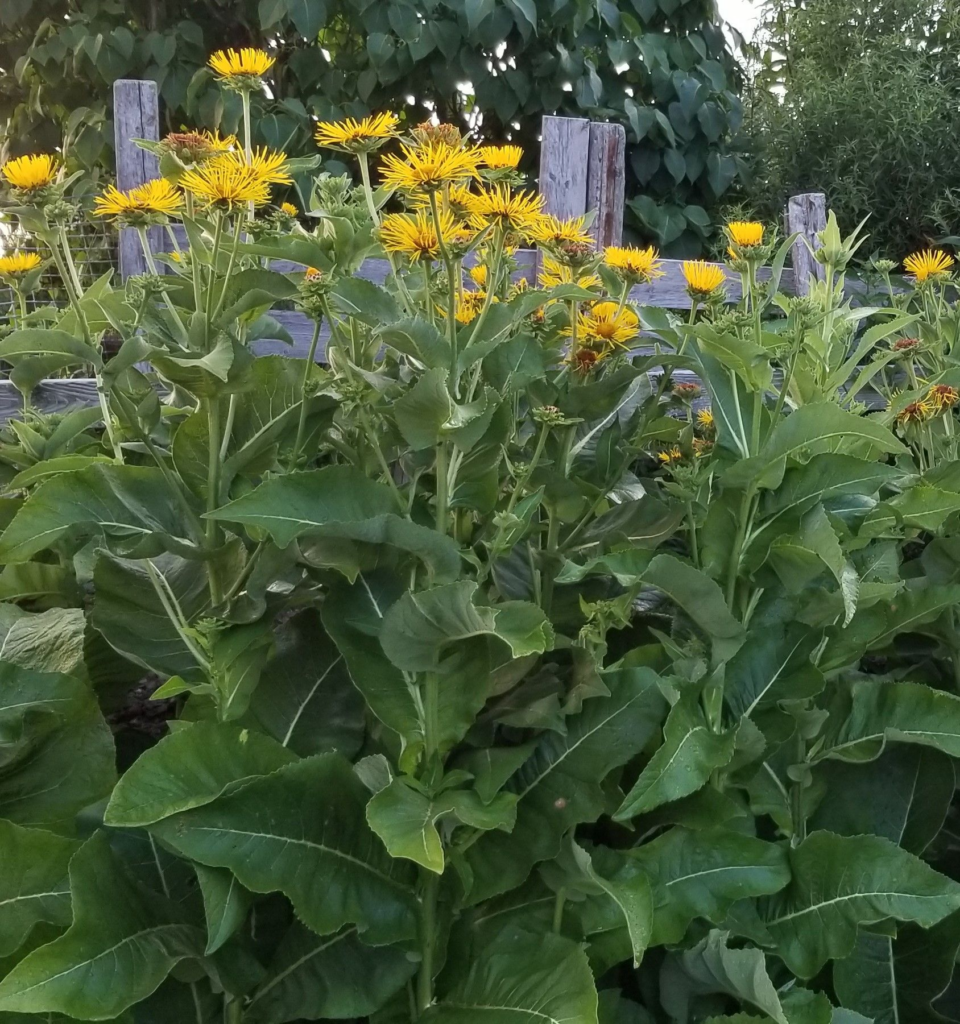My 2020 Pandemic Herb Garden
I moved last September and am starting a garden at my new home. I was planning to grow my favourite perennial herbs and lots of veggies, and when shopping online for seeds last month, I broadened my selection to include herbs that may be useful during this pandemic. Here are my pandemic-specific choices for my quarantine herb garden.
Garlic
Allium sativum
This food/medicine would have been found in gardens centuries ago, and is documented as one of the primary remedies during the black plague and Spanish flu. It is a must as part of the daily diet, 1 clove daily, raw, for prevention and more as needed when there are signs of infection (of any kind). I have stopped sore throats and colds from worsening on many occasions with the help of garlic. It helps to loosen phlegm and cough it up. It contains organosulfur compounds which have been shown to assist with liver detoxification, inflammation, cancer prevention, anti-oxidant. Allicin, a sulfuric compound, is expelled by the body via the lungs, which helps to explain its use as a respiratory remedy. If garlic is too hot (pungent) a tincture or vinegar extract can be used. Other members of the Allium family share many of these benefits (onions, shallots, leeks).
Baikal skullcap
Scutellaria baicalensis
This is one of the herbs I stocked up on early, when the pandemic was beginning to spread from China. It is an ancient remedy in Traditional Chinese Medicine (TCM) for treating a wide variety of ailments, including infections, cancer, liver disease and arthritis. It is currently being used by TCM practitioners in China to treat Covid19. A beautiful, purple flowered perennial herb; its roots are harvested in the fall.
Boneset
Eupatorium perfoliatum
Perennial, native to N. America, traditionally used by first nations peoples and introduced to early settlers. There is documented evidence of this herb being used in the US during the Spanish flu. It’s name is derived from its use to treat “breakbone fever”, the extreme aches and pains that accompany flu. The aerial parts, taken as hot tea, are used to manage fever. It is also a bitter, used to stimulate liver and digestive function. There are many other Native and traditional uses for this local “weed”.
 Elecampane
Elecampane
Inula helenium
I use this herb as a lung tonic and expectorant, to clear excess mucus from the lungs. It also contains volatile and bitter compounds, which stimulate digestion. The roots, harvested in the fall, are quite large; one to two plants yield enough root to make 3-5 litres of tincture. It is best to wait 2-3 years before harvesting; in the meantime it will add beauty, with its tall stem and yellow flowers that attract pollinators.
Horehound
Marrubium vulgare
This is a classic lung remedy, used for many centuries throughout the UK and Europe, to ease cough and congestion. The leaf is used, as an infusion, cough syrup or lozenge – it is one of the main ingredients in the Ricola cough candies. As a member of the mint family, it is easy to grow, and will come back each year, producing a flower after the 3rd or 4th year. It is an aromatic bitter, thus also helpful for indigestion and to enhance metabolism.
 Marshmallow
Marshmallow
Althaea officinalis
I intend to grow this as a centre point in my garden, due to its beauty, and its medicinal and nutritional properties. It is a beautiful, bushy plant with edible leaves and flowers. The root and leaves contain a type of carbohydrate that is mucilaginous, especially when extracted with water. This is a reliable remedy for irritated mucous membranes and dryness, thus helpful for treating sore throat, dry cough, ulcers and inflammation. I appreciate it immensely due to the rapid relief it brings to these conditions.
Elder
Sambucus nigra/canadensis
This was the first medicinal plant that I installed in my garden last fall; I have six elder trees, hoping they will produce an abundance of fruits and flowers for various medicinal preparations. Elderflower makes a sweet tasting tea, I use it in blends for managing fever, and as a gentle nerve and tummy relaxant. The berries are effective against common cold and flu viruses; it is too soon to know if they are equally effective against Covid19, but I have and will use them as an immune stimulant at early signs of infection.
This pandemic herb garden will be a great start to my garden that will continue to be useful in post-pandemic times.
These are but a few of the medicines available for use during the pandemic. I will grow others such as thyme, sage, yarrow, peppermint, hyssop, calendula, nettle and mullein, knowing they too will be supportive, when needed, for dealing with viral infections and possible ongoing manifestations of this pandemic.
My garden will also include nerve tonics, my favorites being skullcap, lemon balm, oatseed and wood betony, for those stressful moments along the way.
The act of creating this medicine garden brings me peace of mind and hope, both important for optimal immune and mental health during these unprecedented times. I hope you have spaces to grow herbal remedies. Some of these herbs are growing at the Bloom garden, you are welcome to go on a self-guided tour. I look forward to inviting you to my garden once the distancing restrictions are lifted.
